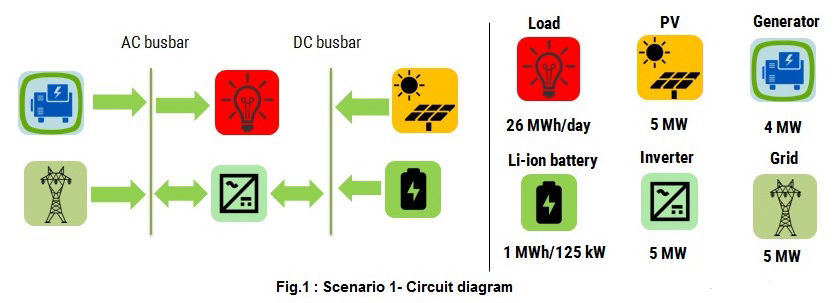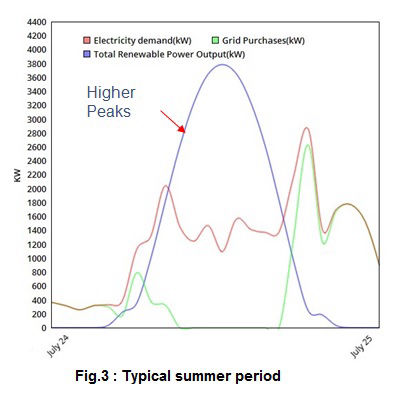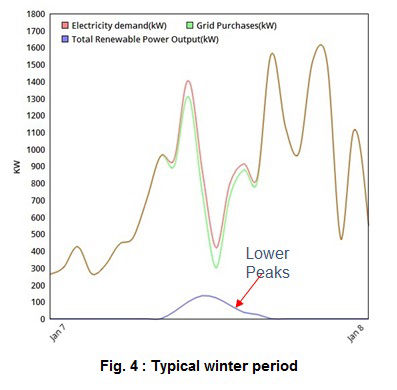The proposed hybrid combination model
5 MW PV + 1 MWh lithium ion battery hybrid system
The Isle of Cumbrae already has a approval from the government to install the 5MW PV and 5MW inverter combination with a 1MWh lithium-ion battery hybrid system. Hence, in our first scenario, we established the same combination. Later, we analysed the effectiveness of this hybrid combination in Cumbrae. The result is evaluated in terms of the renewable fraction, decrease in Cost of electricity(COE), and % of CO2 emission reduction. We find out the performance of this combination by compared with the current situation. As per our analysis, the current COE is estimated as 9.88 pence/kWh, and current CO2 emission is calculated as 6000 tonnes/year. Also, currently the Cumbrae doesn't have any renewable generation, hence, the renewable fraction is zero. To know more about our baseline values, please click here.
We have used 'HOMER Pro' software to design this combination. The circuit diagram that we developed to calculate the output from the proposed Hybrid combination model is given in figure 1.



